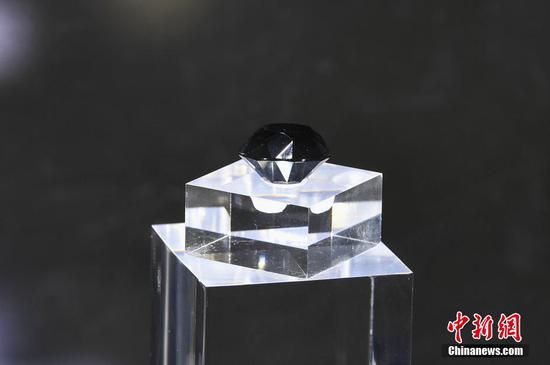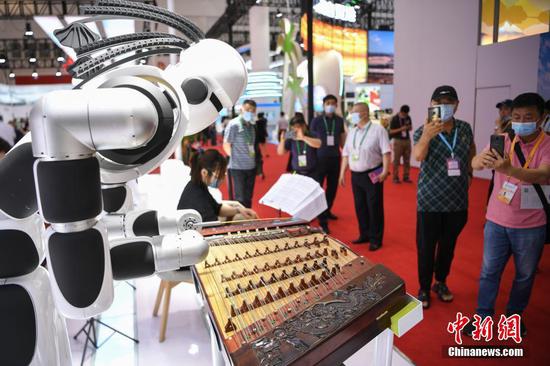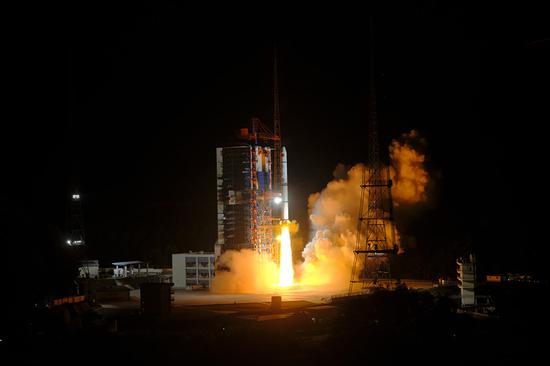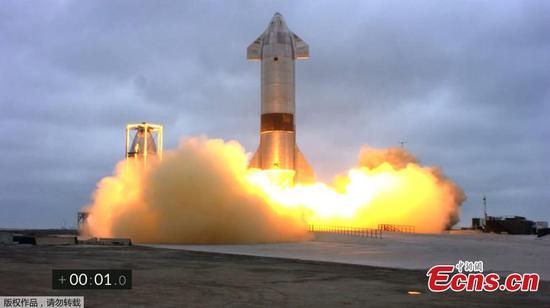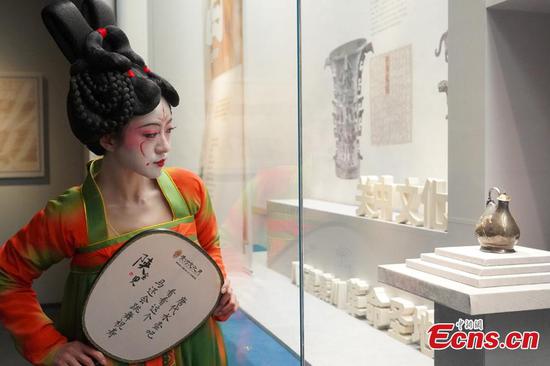A Chinese research team has successfully designed a 62-qubit programmable superconducting quantum processor, naming it Zu Chongzhi after the noted 5th century Chinese mathematician and astronomer. The computer contains the largest number of superconducting qubits so far in the world, and achieved two-dimensional programmable quantum walks on the system, a major milestone in the field.
Experts said the study pushes the possibility of universal quantum computing through a two-dimensional quantum walk a big step forward.
The study was conducted by a research team from the University of Science and Technology of China (USTC), and was published Friday in Science magazine, one of the top academic journals in the world.
The team designed and produced an 8x8 two-dimensional square superconducting qubit array composed of 62 functional qubits in the study, and used this device to demonstrate high fidelity single and two particle quantum walks, according to the team.
Such a device can achieve universal quantum computing, which means that any computing task can be done in this manner, Yuan Lanfeng, a research fellow at the Hefei National Laboratory for Physical Sciences at the Microscale of the USTC, told the Global Times on Sunday.
"It is just like one or two particles randomly moving on an 8x8 chess board. Such random quantum walks can achieve anything that quantum computing can do, which is amazing," he said.
The work was an essential milestone, bringing future larger scale quantum applications closer to realization on noisy intermediate-scale quantum processors, said the team in the article.
The development of quantum computers, one of the major challenges in the forefront of science and technology in the world, has become the focus of competition among countries globally.
U.S. technology giant Google announced a 53-qubit programmable superconducting processor, named Sycamore, in October 2019, and claimed "quantum supremacy," a term to describe the point at which quantum computers solve problems beyond the ability of non-quantum, or classical computers.
Yuan said the 62-qubit Zu Chongzhi processor at least showed that China is at the same level as its U.S. counterparts in the field of superconducting quantum computing.
Pan Jianwei, a renowned Chinese quantum physicist who led the research team for Zu Chongzhi, also developed Jiuzhang, a new light-based quantum computer prototype with his team, and they demonstrated "quantum advantage," the second time a quantum algorithm claimed to achieve this feat in the world, after the first claimed by Google's Sycamore in 2019.
Unlike the Jiuzhang processor, which conducts only one task - finding solutions to the boson-sampling problem - the new Zu Chongzhi processor has the potential to do "everything," even though it may not excel quantum computers for any specific task, Yuan said, adding that the photonic technology that the Jiuzhang processor uses and the superconducting technology that Zu Chongzhi uses are two mainstream technical routes that quantum processors employ.
Quantum computers have superfast parallel computing power, and hold the promise of exponentially accelerating the ability of classical computers in solving important social and economic problems, such as cryptography, big data optimization, material design and drug analysis, through specific algorithms.
Superconducting quantum computing is among the most promising candidates for scalable quantum computing. Its core objective is to synchronously increase the number of integrated qubits and improve the performance of superconducting qubits, so as to achieve exponential acceleration in the processing speed of specific problems, and finally apply it in practice.
The new Zu Chongzhi superconducting quantum computer can be applied to transportation planning, allowing for major optimization of traffic flows in a city, Yuan said.
It can also be used in the field of pharmaceuticals, quickly selecting the most promising combination of drug molecules from all available drug molecule candidates, he added, noting that people have high hopes for putting superconducting quantum computers into use in the pharmaceutical sector in five years.
The two-dimensional programmable quantum walks based on quantum computing have potential applications in quantum search algorithms, general quantum computing and other fields, and will be an important direction of subsequent development, according to a statement from the USTC on Saturday.











